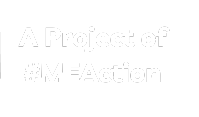Human leukocyte antigen genes
The Human Leukocyte Antigen genes or HLA genes or HLA alleles are a classes of genes created by the human leukocyte antigen proteins. HLA genes help the "immune system distinguish the body's own proteins from proteins made by foreign invaders such as viruses and bacteria".[1][2] It is the human version of the Major Histocompatibility Complex (MHC), which is also found in certain non-human species.[1] HLA associations are considered "hallmarks of autoimmune disease".[3]
HLA class I genes[edit | edit source]
In humans the main classes are are:
- HLA-A
- HLA-B
- HLA-C
The class I proteins produced from these genes are found on the surface of almost all cells, and display these protein fragments (peptides) to the immune system. The immune system then identifies any proteins it recognizes as foreign (such as viral or bacterial peptides), and triggers the destruction of the cell.[1]
HLA class II genes[edit | edit source]
In humans the main classes are:
Other classes found in humans include HLA-DQ3, which Lande et al. (2020) found to have the strongest association with ME/CFS, based on timeout review of previously published research.[3]
ME/CFS[edit | edit source]
Lande et al. (2020) found two HLA associations that were more common in people with ME/CFS, with 19.2% of ME/CFS patients carrying one of the two HLA associations identified, compared to 12.2% of the control group.[3] The HLA associations more common in ME/CFS patients were HLA-C*07:04 and HLA-DQB1*03:03.[3] The 426 ME/CFS patients in the study met the Canadian Consensus Criteria for ME/CFS, except for four who met the International Consensus Criteria for ME.[3]
A small Norwegian trial found patients positive for HLA-DQB1*03:03 and/or HLA-C*07:04 were more likely to respond to cyclophosphamide than patients without those alleles, 83 vs. 43%.[4]
A much larger Norway study the following year by Hajdarevic found further HLA associations in over 400 patients meeting the Canadian Consensus Criteria for ME/CFS.[5]
Notable studies[edit | edit source]
- 2020, Intravenous Cyclophosphamide in Myalgic Encephalomyelitis/Chronic Fatigue Syndrome. An Open-Label Phase II Study[4] - (Full text)
- 2021, Fine mapping of the major histocompatibility complex (MHC) in myalgic encephalomyelitis/chronic fatigue syndrome (ME/CFS) suggests involvement of both HLA class I and class II loci[5] (Full text)
See also[edit | edit source]
Learn more[edit | edit source]
- Histocompatibility complex - Genetics home reference - US Library of Medicine
References[edit | edit source]
- ↑ 1.0 1.1 1.2 1.3 Genetics Home Reference. "Histocompatibility complex". Genetics Home Reference. Archived from the original on April 24, 2020. Retrieved April 25, 2020.
- ↑ Merrian-Webster Dictionary. "Definition of HUMAN LEUKOCYTE ANTIGEN". Merrian-Webster Dictionary. Retrieved April 25, 2020.
- ↑ 3.0 3.1 3.2 3.3 3.4 Lande, Asgeir; Fluge, Øystein; Strand, Elin B.; Flåm, Siri T.; Sosa, DaysiD.; Mella, Olav; Egeland, Torstein; Saugstad, OlaD.; Lie, Benedicte A. (March 24, 2020). "Human Leukocyte Antigen alleles associated with Myalgic Encephalomyelitis/Chronic Fatigue Syndrome (ME/CFS)". Scientific Reports. 10 (1): 1–8. doi:10.1038/s41598-020-62157-x. ISSN 2045-2322.
- ↑ 4.0 4.1 Rekeland, Ingrid G.; Fosså, Alexander; Lande, Asgeir; Ktoridou-Valen, Irini; Sørland, Kari; Holsen, Mari; Tronstad, Karl J.; Risa, Kristin; Alme, Kine; Viken, Marte K.; Lie, Benedicte K.; Dahl, Olav; Mella, Olav; Fluge, Øystein (2020). "Intravenous Cyclophosphamide in Myalgic Encephalomyelitis/Chronic Fatigue Syndrome. An Open-Label Phase II Study". Frontiers in Medicine. 7 (162). doi:10.3389/fmed.2020.00162. ISSN 2296-858X.
- ↑ 5.0 5.1 Hajdarevic, Riad; Lande, Asgeir; Rekeland, Ingrid; Rydland, Anne; Strand, Elin B.; Sosa, DaisyD.; Creary, Lisa E; Mella, Olav; Egeland, Torstein (November 1, 2021). "Fine mapping of the major histocompatibility complex (MHC) in myalgic encephalomyelitis/chronic fatigue syndrome (ME/CFS) suggests involvement of both HLA class I and class II loci". Brain, Behavior, and Immunity. 98: 101–109. doi:10.1016/j.bbi.2021.08.219. ISSN 0889-1591.

